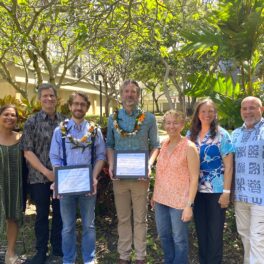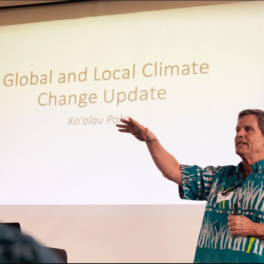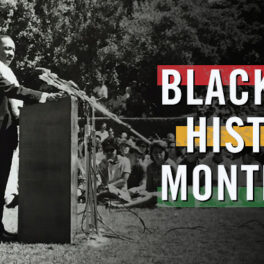Faculty workshops on Kaho‘olawe focus on sustainability and Indigenous Hawaiian science curriculum
 Kaho'olawe with Maui visible in the distance. Credit: Harrison Togia.
Kaho'olawe with Maui visible in the distance. Credit: Harrison Togia.
Just a few miles away from the tourist lights of Kihei, Maui is a barren, windswept island devoid of top soil and riddled with unexploded ordnance. Kahoʻolawe, with its complicated history, has much to teach about sustainability and resilience—of an island and a community.
“The island is both a symbol of abuse and neglect of an island ecosystem and of the determination of Hawaiʻi’s people to protect our precious islands,” said Davianna Pōmaikaʻi McGregor, University of Hawaiʻi at Mānoa professor of Ethnic Studies.
McGregor is leading a team of UH faculty including C. Kaliko Baker, assistant professor of Hawaiian Language Kawaihuʻelani Center for Hawaiian Language; Rosie ʻAnolani Alegado, assistant professor of Oceanography; Josh Kaʻakua, diversity specialist with the UH Office of STEM Education; and Oceana Francis, associate professor of Civil Engineering and College of Social Sciences Native Hawaiian Initiatives Coordinator, Kamakana Aquino to organize two faculty workshop on Kahoʻolawe. The goal is to enhance faculty capacity to engage in the sustainability and resilience of island ecosystems and to integrate indigenous Hawaiian science into curricula.
Kahoʻolawe is a historically and culturally rich training ground. Originally, Kanaloa Kahoʻolawe was a center for observing the seasonal and daily movements of the sun, stars and moon and for training navigators in wayfinding. The island was degraded by goat, sheep and cattle ranching and live fire military training exercises in the 19th and 20th centuries. Beginning in 1976, the Native Hawaiian community rallied under the call of “Aloha ʻĀina” to stop military use of the island. In October 1990 all military use stopped.
This project is supported by the UH Mānoa Vice Chancellor for Research Initiative on Sustainability and Resilience with the collaboration of the Kahoʻolawe Island Reserve Commission (KIRC) and the Protect Kahoʻolawe ʻOhana (PKO). These two organizations provide stewardship for the island and ensure that the island serves as a place of scientific learning and cultural practice—integrating stewardship, restoration, traditional Hawaiian science and cultural practices.
The KIRC has initiated rennovations and improvements to the buildings at their base of operations in Honokanaiʻa to phase out air-conditioning and reduce their energy needs. At the same time, they have just installed an 80 KWH solar network and battery bank to transition off of fossil fuel. The KIRC also has a new desalination system that reduces the power needs, and expands the capacity to produce freshwater for the base camp.
The focus of the first workshop was to envision and design research projects that will support the sustainability and resilience of island ecosystems that can be piloted on the island of Kanaloa Kahoʻolawe.
“These workshops offer unique professional development opportunities for faculty and create opportunities for building relationships and collaboration from diverse fields across the university,” said Makena Coffman, director of the new UHM Sustainability and Resilience Institute who took part in the recent workshop.
The second workshop scheduled for March 2019, will feature Kalei Nuuhiwa, specialst in Traditional Native Hawaiian Science from the Edith Kanakaʻole Foundation. She will share examples and facilitate sessions on how to design and integrate Indigenous Hawaiian science into curriculum offered by various departments at UH.
These workshops offer unique professional development opportunities for faculty and and create opportunities for building community relationships and faculty collaboration among diverse fields across the university.
“Through this effort, we hope to create lasting momentum toward engaging in sustainability and resilience problems from a perspective that is more grounded in Hawaiʻi’s people and places,” said Francis.
* * *
Instructional faculty at UH Mānoa who are interested in applying to participate in the spring 2019 workshop on Kahoʻolawe can complete the application form here.



